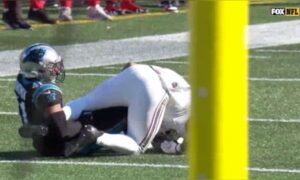There’s a difference between not having much of a running game, and having a bad running game. In 2018, the Pittsburgh Steelers ran the ball 345 times, for 4.2 yards per carry, totaling 1445 yards, but also 16 touchdowns. Last year, they picked up 1447 yards, but did so on 395 attempts, averaging just 3.7 yards per carry, and a mere seven rushing touchdowns.
They ran the ball 50 fewer times for two more yards and less than half the number of scores. That’s the difference between not having much of a running game and having a bad one. in 2020, the Steelers are looking to have a more robust running game that is also better, and James Conner is putting that project on his own shoulders.
“With me being a running back, it’s my job, I’m taking it personally, to get that running game going this season”, he told Erie News Now earlier this week during an interview. “It’s been down, it was down last year. I’ll be doing everything I can to get that running game going to set up the passing game, and just to be the leader out there, being vocal, leading by example. I’m going into my fourth year now, so it’s about time I step up and do something with it”.
As a first-year starter in 2018, Conner rushed for 973 yards on the ground on 2015 attempts, punching the ball in 12 times, and doing so in 13 games, because he missed three due to injury. Last season, amid a number of injuries, he amassed just 464 rushing yards on 116 carries, his averaging dipping to 4.0, with four rushing touchdowns.
The biggest piece of the puzzle that is returning the running game to prominence is simply keeping Conner on the field. There is only so much that he can do in that regard. He is working harder on his body and general wellbeing than he ever has before in preparation for the 2020 season, but he could also, perhaps do some things to alter his running style that could shield him from some of the heavier blows he might take.
Pittsburgh is also hoping to be better insulated from injury at the position than it has been the last few years. Benny Snell should be the prime factor in that regard as he enters his second season. He rushed for over 400 yards as a rookie last year with a couple of touchdowns, and he largely fits the same mold as Conner—especially if he manages to tighten up his frame a bit.
Then there’s Jaylen Samuels, who should look more comfortable this year, and rookie Anthony McFarland, who adds another dimension—that is to say, speed—to a room that has been lacking that for some time. But while turning the running game around doesn’t end with Conner, it certainly begins with him.








